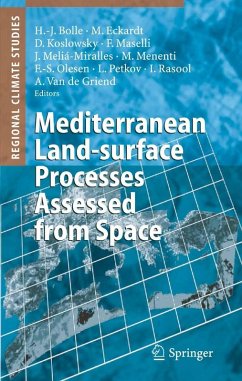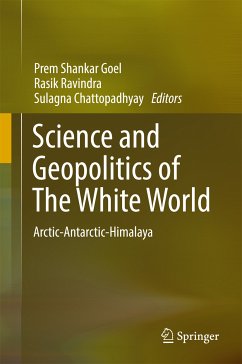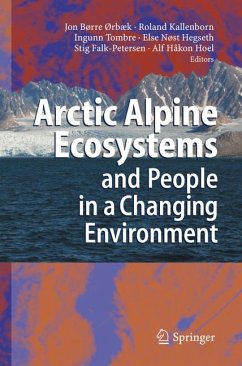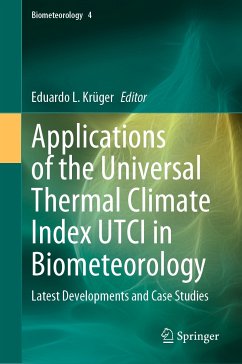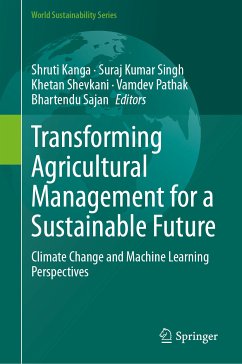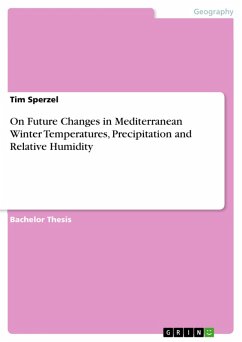
On Future Changes in Mediterranean Winter Temperatures, Precipitation and Relative Humidity (eBook, PDF)
Sofort per Download lieferbar
Statt: 27,95 €**
18,99 €
inkl. MwSt. und vom Verlag festgesetzt.
**Preis der gedruckten Ausgabe (Broschiertes Buch)
Alle Infos zum eBook verschenkenWeitere Ausgaben:

PAYBACK Punkte
0 °P sammeln!
Bachelor Thesis from the year 2017 in the subject Geography / Earth Science - Meteorology, Aeronomy, Climatology, grade: 3,0, Justus-Liebig-University Giessen, language: English, abstract: This thesis is going to identify the differences for the Representative Concentration Pathway (RCP) 2.6 W/m² scenario of the 2 meter temperature, daily precipitation and relative humidity in the Mediterranean area (30°N - 50°N and 10°W - 45°E) compared to the reference period 1971 - 2000; and also the development and main characteristics of the RCPs especially for the chosen RCP 2.6 scenario. All four R...
Bachelor Thesis from the year 2017 in the subject Geography / Earth Science - Meteorology, Aeronomy, Climatology, grade: 3,0, Justus-Liebig-University Giessen, language: English, abstract: This thesis is going to identify the differences for the Representative Concentration Pathway (RCP) 2.6 W/m² scenario of the 2 meter temperature, daily precipitation and relative humidity in the Mediterranean area (30°N - 50°N and 10°W - 45°E) compared to the reference period 1971 - 2000; and also the development and main characteristics of the RCPs especially for the chosen RCP 2.6 scenario. All four RCPs deal with the time lapse from the year 1850 to 2100 and expect a continuous radiative forcing, except RCP 2.6, which is also called RCP 3-P.D. that means peak and decline. The chosen data is from the CORDEX project being part of the CMIP5, has a EUR-11 resolution (0.11°) with EC-Earth as driving GCM and RCA4 as RCM and also r12i1p1 ensemble in RCP 2.6 scenario with the periods 1971 - 2000 (reference period) and 2021 - 2050; 2071 - 2100 (experiment period). This thesis considers the Paris Agreement, which targets a maximum global warming of 1.5°C. Under the RCP 2.6 conditions the first target of the Paris Agreement, maximum 1.5°C global warming, will be achieved in the Mediterranean area compared to the chosen reference period. The Mediterranean area is characterized by mild and wet winters and also by hot and dry summers. Moreover, in the Mediterranean north the climate is arid and temperate whilst in its south it is rainy. Geographically, the Mediterranean area counts 21 countries and lies between the subtropical and temperate climate zone. This supports the evaporation along with the decreasing of soil moisture and the flow of rivers. Such a development may produce a greater risk of future droughts and heatwaves. Very strong summers in the Mediterranean area are associated with Asian and African monsoons and a strong geopotential blocking. In the future, annual mean temperatures and annual precipitation over the entire European region will increase stronger than globally. It is projected that in Europe the largest warmings and the most increasing precipitation will occur in the Mediterranean area. In addition, the number of rainy days per year will mainly increase in the north. Moreover, it is expected that there will be higher wind speed for the European region. The motivation for this topic is that the Mediterranean area will be the most prominent hotspot for the climate change in the upcoming periods. An increase of aerosols in Central Europe, Africa and Asia will significantly influence the future climate of the Mediterranean area.
Dieser Download kann aus rechtlichen Gründen nur mit Rechnungsadresse in A, B, BG, CY, CZ, D, DK, EW, E, FIN, F, GR, HR, H, IRL, I, LT, L, LR, M, NL, PL, P, R, S, SLO, SK ausgeliefert werden.




